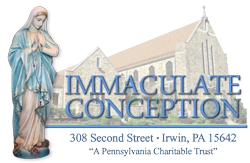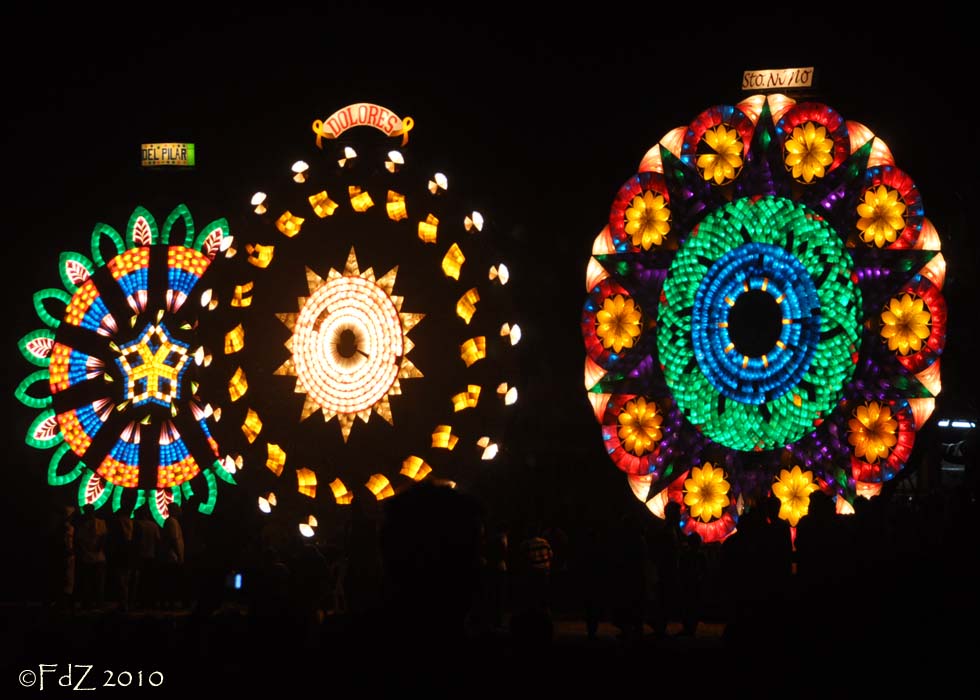Most of my friends here in America love Christmas more than any other holiday. “It’s the most wonderful time of the year,” as we all say. Speaking from the 4 Christmases I’ve had in Irwin and North Huntingdon, I could only agree. I love the packed church; the solemn and meaningful advent preparation, the Christmas carols rendered in my original native tongue; the truly and literally snowy and cold December; the colorful and flickering series of lights all over most houses, the exchange of beautiful holiday cards, and the excitement of finding out the tested and proven generous gifts from Kris Kringle. And what could be crazier than knowing I am not just watching Home Alone, I am now part of the hustle-and-bustle of Christmas in America in real-time.
Filipinos too can be uniquely and equally crazy with Christmas. If you heard about “Ber-months”—the time of the year that fall from September to December—that’s how long Filipinos would like to celebrate this joyful season. Christmas in the Philippines is also as lively, colorful, full of traditions, bright, and definitely twinkling as the ones I saw at Overly’s Country Christmas.
The first days come with songs and carols; radio stations fill the air with the season’s spirit; while TV programs kick-off the countdown. Kids go house-to-house, a la trick or treat, singing Christmas carols where some accompanied it with dancing and choreography. As days go by, firecracker flares and blasts are seen and heard sporadically everywhere. Of course, this celebratory noise and excitement build in crescendo each day as it goes all-out Christmas Midnight as well as on the threshold of New Year’s Day.
One of the most iconic symbols of Filipino Christmas spirit is the Christmas lantern or locally known as “paról”. The term is coined from the Spanish “farola” which means lamp or light. What served as a guide for the three wise men to finally find the Baby Jesus on the manger was the lamp from heaven—the guiding star of Bethlehem. So this explains why the paról or farola is in a star-shape.
I have one hanging by the window of my apartment with its bouncing and colorful lights illuminating that little part of route 993. In my home country these star-shaped lanterns are displayed hanging outside the house too, along the busy streets of the cities and even in provincial towns and small villages. I grew up making one of them since fourth grade to the tenth—not the fancy ones though. But, be it a paról with simple or intricate designs, for Filipinos, it is an expression of shared faith and hope, the symbol of the triumph of light over darkness, and of Filipinos’ goodwill during Christmas season.
Filipinos too are widely known for celebrating the Simbang Gabi or Misa de Gallo. Historically, Simbang Gabi was adapted from the Catholic Misa de Gallo, which literally means “Mass of the rooster,” to indicate it is held when the rooster crows. This event dates back to the time when Miguel Lopez de Legazpi celebrated the first feast of the Nativity in the year 1565 in the Philippine archipelago.
Simbang Gabi traces its roots in Mexico when, in 1587, Fray Diego de Soria, head of the convent of San Agustin Acolman, petitioned the Pope for permission to hold Christmastide Masses outdoors because the church could not accommodate the multitude that attended the dawn services. When the request was granted, the Masses became known as Misa de Aguinaldo.
It was in the 16th century when Pope Sixtus V decreed that these pre-dawn Masses also be held in the Philippines starting every Dec. 16. The decree was in keeping with the nine-day traditional festivals of Filipinos in celebrating auspicious occasions like harvest times. It was also meant to give farmers a chance to hear Mass before setting out for the fields. Rural Filipinos were used to starting the day two hours before sunrise. Church bells rang to call the faithful to Simbang Gabi. In some provinces, brass bands played traditional Christmas music and parish priests would go as far as knocking on the doors of every home. In my home parish, we wake up to the jolly Christmas jingles played on record and poems read by the pastor.
During this season, although the paróls now are made to look more like decoratives but previously the lanterns’ purpose was to light the street, to serve as the farmers’ guide in going to the Holy Mass. After Mass, the parishioners treated themselves to traditional “Puto, Kutsinta and Bibingka,” made with sweet rice dough to crown each of the nine-day novena and truly celebrate Christmas, the Filipino way.
One Christmas time, my fellow acolytes and I came up with a beautiful Christmas outreach program. I was still a seminarian then. We had a whole busy day going from one place to another to distribute Christmas gifts to the less fortunate families of our parish. It was already dusk when we had to bring the last gift to a house that was relatively far from where we were stationed. It was located in the middle of a rice field—we walked through the muddy, buggy, and dark trail which we actually could only care less though.
Inside that little shanty was a disabled old woman waiting for her son to arrive from a day’s work. Her house was dimly lit–no electricity, old and worn, poor and solitary but probably a bit better than a stable. I felt her in her illness that crippled her for the rest of her life. But her voice was strong and filled with enthusiasm as she bid us welcome to her lowly abode. She was not expecting anything, but I know she was happy to see us young kids who, she probably thought, were accidentally lost to her place.
We have gifts for you, we surprised her—”20 pounds of rice, several packs of noodles, and canned goods.” Her joy was priceless and she couldn’t be more grateful with the thought that she was unexpectedly visited by some young kids she later called angels. Then she greeted us back with a happier “Merry Christmas.” I cherished that evening as one of my most unforgettable and meaningful Christmases I had. There’s joy in being able to bring a little more happiness and light—like a paról, to people whom God allows us to meet with. But that evening, it was I think, I, in turn had so much to learn what Christmas truly and deeply meant.
Christmas is a celebration everywhere. It brings the same joy to every home. In my eyes, the circumstance this poor woman was into maybe as dim as that scantily lit shack where she lived. Hope was as tiny as that little burning lamp on her table, but, it seems, even that was already enough to get her through each day with probably a little complaint but with more of gratitude. In fact, she was quite excited to see her son come home and meet with us, “he’s bringing goodies too for our ‘noche buena’ (Christmas meal) tonight.”
she proudly reported.
What was just set before my eyes, was the face of poverty in its boldest. But the joy of Christmas remained pure and undiminished even as it was to be celebrated in that literally poor home. The light and hope that Christ brings is the greatest gift we receive on Christmas. And it touched me so deeply to know that the mother in that poor shanty kept that light ever burning in her heart. That’s what it means “to keep Christ on Christmas”. With a heart like this, we can say, Christmas indeed is that time of the year that the poor can celebrate with as much joy as the rich. For the Mighty Savior, the Emmanuel, whose light is far brighter than any darkness and despair is born for us!
Merry Christmas to you!
Father Roniel
(Photo courtesy of FdZ, http://viewthrumygloballens.blogspot.com/2010/12/pampanga-parols.html)


